货币银行学PPT 米什金 [兼容模式]
- 格式:pdf
- 大小:378.05 KB
- 文档页数:42
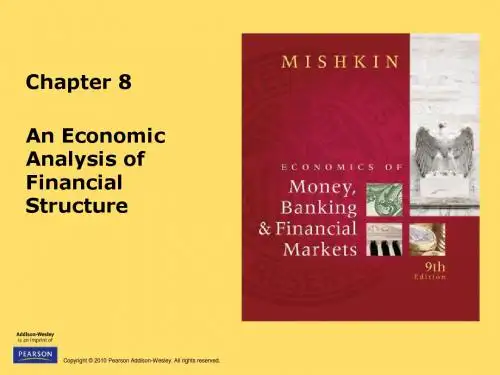
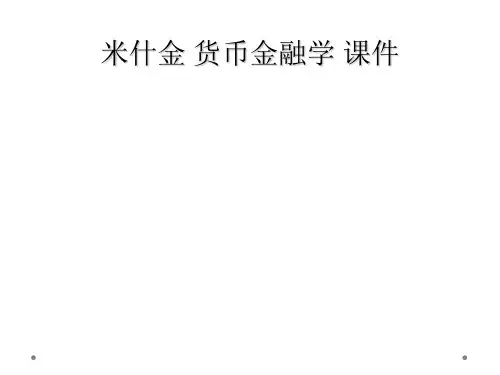
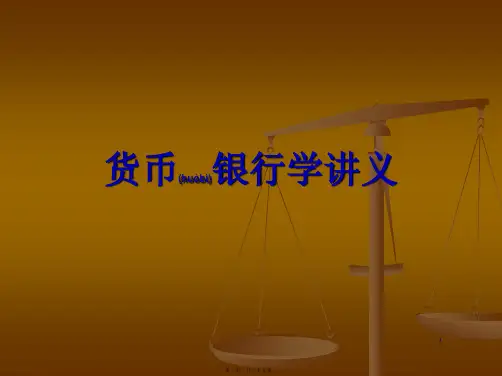
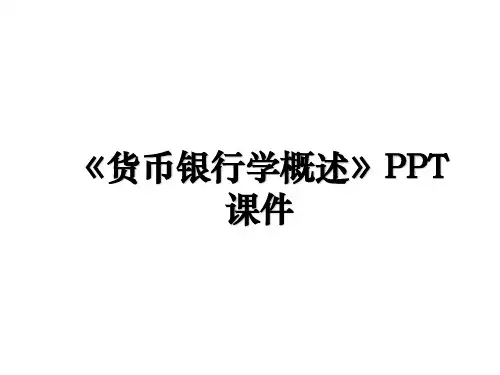

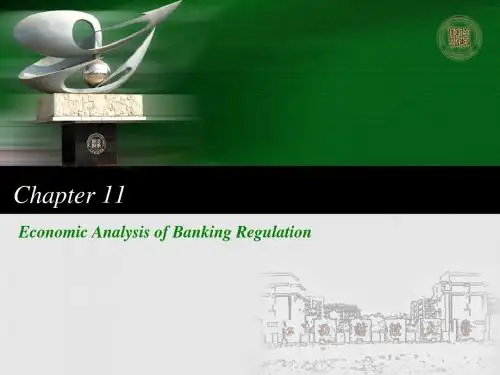
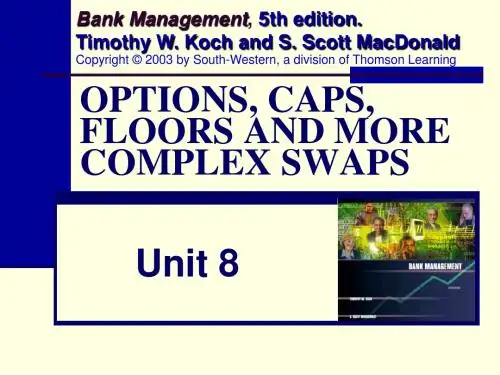

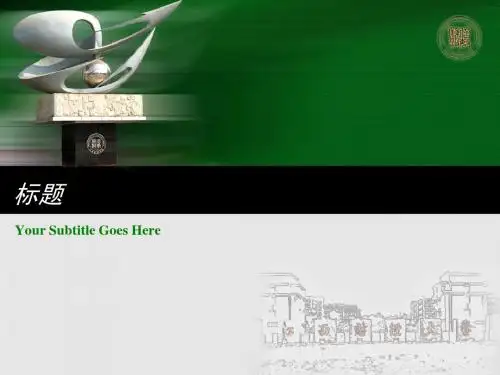
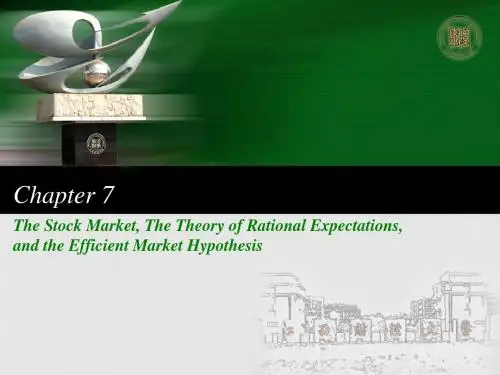
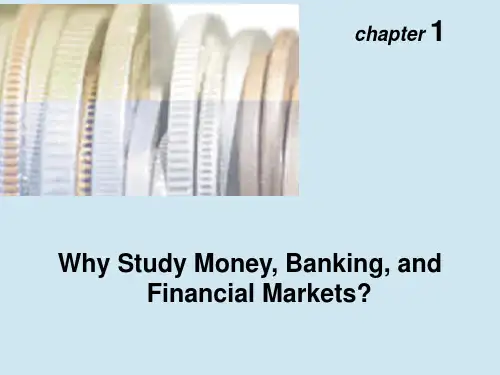
Chapter 14 Central Banks and the Federal Reserve System•Topics include:–Why we need central banking–Origins of the Federal Reserve System–Structure of the Federal Reserve System–How Independent is the Fed?–Structure and Independence of the European Central Banks St t d I d d f th E C t l B k –Structure and Independence of other Foreign Central Banks –Explaining Central Bank Behavior–Should the Fed Be Independent?Origins of the Federal Reserve SystemResistance to establishment of a central •bank–Fear of centralized power–Distrust of moneyed interests•No lender of last resort–Nationwide bank panics on a regular basis –Panic of 1907 so severe that the public was convinced a central bank was needed•Federal Reserve Act of 1913–Elaborate system of checks and balances–DecentralizedStructure of the Federal Reserve System•The writers of the Federal Reserve Act wanted to diffuse power along regional lines, between the private sector and the government, and among bankers, business people, and the public•This initial diffusion of power has resulted in the evolution of the Federal Reserve System to include l f h d l S l d the following entities:–The Federal Reserve banks, the Board of Governors of they,pFederal Reserve System, the Federal Open MarketCommittee (FOMC), the Federal Advisory Council, andaround 2,900 member commercial banks.Figure 1 Structure and Responsibility for Policy Tools in the Federal Reserve SystemFigure 2 Federal Reserve SystemSource: Federal Reserve Bulletin.Federal Reserve Banks•Quasi-public institution owned by private commercial banks in the district that are members of the Fed system•Member banks elect six directors for each district; three more are appointed by the Board of Governors –Three A directors are professional bankers–Three B directors are prominent leaders from industry, labor,p y,, agriculture, or consumer sector–Three C directors appointed by the Board of Governorsare not allowed to be officers, employees, or stockholdersof banksFederal Reserve Banks (cont’d);•Member banks elect six directors for each district; three more are appointed by the Board of Governors (cont’d)–Designed to reflect all constituencies of the public•Nine directors appoint the president of the bank subject to Ni di t i t th id t f th b k bj t tapproval by Board of GovernorsBanks•Clear checks•Issue new currency y•Withdraw damaged currency from circulation •Administer and make discount loans tobanks in their districts•Evaluate proposed mergers and applications for banks to expand their activitiesBanks (cont’d)Banks (cont d)ct as a so s bet ee t e bus ess co u ty •Act as liaisons between the business community and the Federal Reserve Systemg p•Examine bank holding companies and state-chartered member banks•Collect data on local business conditions•Use staffs of professional economists to research p y p y topics related to the conduct of monetary policyFederal Reserve Banks andMonetary PolicyDirectors establish the discount rate •Directors “establish” the discount rate•Decide which banks can obtain discount loans •Directors select one commercial banker from each district to serve on the Federal Advisory Council which consults with the Board of Governors and provides information to help conduct monetary policy•Five of the 12 bank presidents have a vote in the Federal Open Market Committee (FOMC)Member Banks•All national banks are required to be members of the Federal Reserve System •Commercial banks chartered by states are C i l b k h d bnot required but may choose to be members •Depository Institutions Deregulation and Monetary Control Act of 1980 subjected all y jbanks to the same reserve requirements as member banks and gave all banks access togFederal Reserve facilitiesBoard of Governors of theFederal Reserve System•Seven members headquartered in Washington, D.C.•Appointed by the president and confirmed by the Senate•14-year non-renewable term•Required to come from different districts Chairman is chosen from the governors and •serves four-year termDuties of the Board of Governors•Votes on conduct of open market operations •Sets reserve requirements•Controls the discount rate through “review and determination processand determination” process•Sets margin requirements•Sets salaries of president and officers of each Federal Reserve Bank and reviews each bank’s budgetDuties of the Board of Governors (cont d)(cont’d)•Approves bank mergers and applications for new activities•Specifies the permissible activities of bank holding companies•Supervises the activities of foreign banks operating in the U.S.operating in the U SChairman of the Board ofGovernors•Advises the president on economic policy •Testifies in Congress•Speaks for the Federal Reserve System to the media•May represent the U.S. in negotiations with foreign governments on economic mattersFederal Open Market Committee(FOMC)•Meets eight times a year•Consists of seven members of the Board of Governors, the president of the Federal Reserve Governors the president of the Federal ReserveBank of New York and the presidents of four other Federal Reserve banks•Chairman of the Board of Governors is also chair of FOMC•Issues directives to the trading desk at the Federal Reserve Bank of New YorkFOMC Meeting•Report by the manager of system open market operations on foreign currency and domestic open market operations and other related issues •Presentation of Board’s staff national economic forecast•Outline of different scenarios for monetary policy actions•Presentation on relevant Congressional actions •Public announcement about the outcome of the meetingtiWhy the Chairman of the Board ofGovernors Really Runs the Show•Spokesperson for the Fed and negotiates with Congress and the President•Sets the agenda for meetingsS h d f ip y •Speaks and votes first about monetary policySupervises professional economists•and advisersHow Independent is the Fed?•Instrument and goal independence.I t t d l i d d •Independent revenue•Fed’s structure is written by Congress, and is subject to change at any time.j g y•Presidential influence–Influence on Congress–Appoints members–Appoints chairman although terms are notconcurrentShould the Fed Be Independent?p•The Case for Independence–The strongest argument for an independentcentral bank rests on the view that subjecting Itto more political pressures would impart aninflationary bias to monetary policy•The Case Against Independencep-Proponents of a Fed under the control of thepresident or Congress argue that it is undemocratic to have monetary policy (which affects almosteveryone in the economy) controlled by an elitegroup that is responsible to no oneThe Case for Independence•Political pressure would impart an inflationary bias to monetary policy •Political business cycle•Could be used to facilitate Treasury financing of large budget deficits: accommodation•Too important to leave to politicians—the principal-agent problem is worse for politiciansThe Case Against Independence•Undemocratic•UnaccountableDiffi l di fi l d •Difficult to coordinate fiscal and monetary policy•Has not used its independence successfullyExplaining Central Bank Behaviorg•One view of government bureaucratic behavior is that bureaucracies serve the public interest (this is the public interest view). Yet some economists have developed a theory of bureaucratic behavior thatd l d th f b ti b h i th t suggests other factors that influence how bureaucracies operate•The theory of bureaucratic behavior may be a useful guide to predicting what motivates the Fed and other central banksExplaining Central Bank Behavior (cont d)(cont’d)•Theory of bureaucratic behavior:objective is to maximize its own welfare which is related to power and prestige–Fight vigorously to preserve autonomy–Avoid conflict with more powerful groups •Does not rule out altruismStructure and Independence of the European Central Bank •Patterned after the Federal Reserve •Central banks from each country play similar role as Fed banks•Executive Board–President, vice-president and four othermembers–Eight year, nonrenewable termsEi h bl•Governing CouncilDifferences Between the European System of Central Banks and the Federal ReserveSystem•National Central Banks control their own budgets and the budget of the ECB •Monetary operations are not centralized Does not supervise and regulate financial •institutionsGoverning Council•Monthly meetings at ECB in Frankfurt, Germany•Twelve National Central Bank heads and six Executive Board members •Operates by consensus•ECB announces the target rate and takes questions from the media•To stay at a manageable size as new countries join, the Governing Council will be on a system of rotationHow Independent Is the ECB?•Most independent in the world•Members of the Executive Board have long terms•Determines own budget•Less goal independent–Price stability•Charter cannot by changed by legislation; o y by e s o o t e aast c t eaty only by revision of the Maastricht TreatyStructure and Independence of Other Foreign Central Banks •Bank of Canada–Essentially controls monetary policy•Bank of EnglandB k f E l d–Has some instrument independence.•Bank of Japan–Recently (1998) gained more independencey()g p•The trend toward greater independenceAmericans' fear of centralized power and 1)Americans fear of centralized power and their distrust of moneyed interests explains why the U.S. did not have a p y central bank until theA)17th century. )y B)18th century.C)19th century.D) 20th century.5)The traditional American distrust of moneyed interests and the fear of centralized power helps to explainp p pA) the failures of the first two experiments ingcentral banking in the United States.B) the decentralized structure of the FederalyReserve System.C) why the Board of Governors of the Federal Reserve System is not located in New York.yD) all of the above.E) only (a) and (b) of the above.10)The Fed bank, with over 30 The _____ Fed bank, with over 30 percent of the system's assets, is the most important of the Federal Reserve Banks.p A) ChicagoB) Los AngelesC) MiamiD) New YorkE) Washington, DC12)Which of the following are entities of the Federal Reserve System?A) Federal Reserve BanksB) The FOMCC) The Board of Governors)D) All of the above are Federal Reserve entitiesE) Only (a) and (b) of the above are Federal Reserve entities18)The president from which FederalReserve Bank always has a vote in the Federal Open Market Committee?A)PhiladelphiaB)BostonB tC)San FranciscoD) New York19)Member commercial banks havepurchased stock in their district Fed banks;the dividend paid by that stock is limitedp yto)p yA)four percent annually.B) five percent annually.C) six percent annually.D) eight percent annually.All _____ are required to be members of 21)All are required to be members of the Fed.A) state chartered banksB) nationally chartered banksC) banks with assets less than $100 million )$D) banks with assets less than $500 million27)Although the Federal Open Market Committee does not have formal authority to set _____ and the _____, it does possess __________,pthe authority in practice.)g q;A) margin requirements; discount rateB) margin requirements; federal funds rateC) reserve requirements; discount rateD) reserve requirements; federal funds rate33)Each member of the seven-member Each member of the seven member Board is appointed by the president and confirmed by the Senate to servey A) 4-year terms.B) 6-year terms.B) 6year terms. C) 14-year terms.D) as long as the appointing president remains in office.34)The Board of GovernorsA) establishes, within limits, reserve requirements.requirementsB) effectively sets the discount rate.C) sets margin requirements.)D) does all of the above.E) does only (a) and (b) of the above.36)The Federal Open Market Committee consists of A) the five senior members of the seven-A) the five senior members of the seven member Board of Governors. B) the seven members of the Board of Governors and seven presidents of the regional Fed banks. g C) the seven members of the Board of Governors and five presidents of the p regional Fed banks. D) the twelve regional Fed bank presidents )g p and the chairman of the Board of Governors.41)The designers of the Federal Reserve Actof 1913 intended the Fed to have oneprimary monetary tool:A)open market operations.B) discounting.B) di tiC) setting reserve requirements.D) setting margin requirements.43)The designers of the Federal Reserve Act meant to create a central bank characterized by itsA) system of checks and balances and decentralization of power. decentralization of powerB) strong concentration of power in the hands of a few men.f fC) inability to function as a lender-of-last-resort.)pD) responsiveness to the electorate.61)Federal Reserve independence is thought toA) introduce a short term bias to monetary A) introduce a short-term bias to monetary policymaking.B) lead to better fiscal and monetary policy coordination.C) introduce longer run considerations toC) introduce longer-run considerations to monetary policymaking.D) do both (a) and (b) of the above.The oldest central bank, having been 88)The oldest central bank having beenfounded in 1694, is theA)Bank of England.Bank of EnglandB) Deutsche Bundesbank.C) Bank of Japan.D) Federal Reserve System.)y89)The trend in recent years is that more and more governmentsA) have been granting greater independence to their central banks.B) have been reducing the independence their central banks to make them morep p accountable for poor economic performance.C) have mandated that their central banksgfocus on controlling inflation.D) have required their central banks to cooperate more with their Ministers ofpFinance.91)Prior to the establishment of theEuropean Central bank, which of thefollowing central banks had the greatestg gdegree of independence?)gA)Bank of EnglandB) Bank of CanadaC) Bank of JapanD) Swiss National BankFigure 1 Time Line of the Early History of Commercial Banking in the United States。
Chapter 13 Banking Industry: Structure andCompetitionHistorical Development of theBanking System•Bank of North America chartered in 1782•Controversy over the chartering of banks.•National Bank Act of 1863 creates a new banking system of federally chartered banksg y y–Office of the Comptroller of the Currency–Dual banking system•Federal Reserve System is created in 1913.Figure 1 Time Line of the Early History of Commercial Banking in the United StatesPrimary Supervisory Responsibility ofBank Regulatory Agencies•Federal Reserve and state banking authorities: state banks that are members of the Federal Reserve System.the Federal Reserve System•Fed also regulates bank holding companies.•FDIC: insured state banks that are not Fed members.•State banking authorities: state banks without FDIC insurance.without FDIC insuranceFinancial Innovation and the Growthof the Shadow Banking Systemof the “Shadow Banking System”•Financial innovation is driven by the desire to earn profits•A change in the financial environment will stimulate a search by financial institutions for innovations that are likely to be profitable–Financial engineeringResponses to Changes in DemandConditions: Interest Rate Volatility •Adjustable rate mortgagesAdjustable-rate mortgages–Flexible interest rates keep profits high whenrates rise–Lower initial interest rates make them attractiveyto home buyers•Financial Derivatives–Ability to hedge interest rate risk–Payoffs are linked to previously issued (i.e.derived from) securities.Responses to Changes in SupplyConditions: Information Technology •Bank credit and debit cards–Improved computer technology lowerstransaction costs•Electronic banking–ATM, home banking, ABM and virtual bankingATM home banking ABM and virtual banking •Junk bonds•Commercial paper marketResponses to Changes in SupplyConditions: Information Technologygy (cont’d)•SecuritizationS iti ti–To transform otherwise illiquid financial assetsinto marketable capital market securities.i t k t bl it l k t iti–Securitization played an especially prominent role in the development of the subprime mortgagemarket in the mid 2000s.Avoidance of Existing Regulations: Loophole Mining•Reserve requirements act as a taxR i t t ton deposits•Restrictions on interest paid on deposits ledto disintermediation•Money market mutual funds•Sweep accountsFinancial Innovation and theDecline of Traditional Banking •As a source of funds for borrowers, market share has fallen•Commercial banks’ share of total financial intermediary assets has fallen•No decline in overall profitabilityIncrease in income from off-balance-sheet •Increase in income from off balance sheet activitiesFigure 2 Bank Share of TotalNonfinancial Borrowing, 19602011Nonfinancial Borrowing 1960–2011Source: Federal Reserve Flow of Funds; /releases/z1/Current/z1.pdf. Flow of Funds Accounts; Federal Reserve Bulletin.Financial Innovation and the Decline of Traditional Banking (cont d)of Traditional Banking (cont’d)g q g•Decline in cost advantages in acquiring funds (liabilities)–Rising inflation led to rise in interest rates anddisintermediation–Low-cost source of funds, checkable deposits, declined inimportance•Decline in income advantages on uses of funds (assets)–Information technology has decreased need for banks toI f ti t h l h d d d f b k tfinance short-term credit needs or to issue loans–Information technology has lowered transaction costs forother financial institutions, increasing competitionother financial institutions increasing competitionBanks’ Responses•Expand into new and riskier areas of lending –Commercial real estate loans–Corporate takeovers and leveraged buyoutsC t t k d l d b t •Pursue off-balance-sheet activities–Non-interest income–Concerns about riskStructure of the U.S. Commercial Banking Industry•Restrictions on branchingR t i ti b hig g–McFadden Act and state branching regulations.•Response to ranching restrictions–Bank holding companies.–Automated teller machines.Table 1 Size Distribution of Insured Commercial Banks, March 30, 2011Table 2 Ten Largest U.S. Banks, December 30, 2010December 30 2010Bank Consolidation andNationwide Banking•The number of banks has declined over the last 25 yearsBank failures and consolidation.–Bank failures and consolidation–Deregulation: Riegle-Neal Interstate Bankingand Branching Efficiency Act f 1994and Branching Efficiency Act f 1994.–Economies of scale and scope fromo at o tec o ogyinformation technology.•Results may be not only a smaller number of banks but a shift in assets to much larger banks.Benefits and Costs of BankConsolidation•Benefits–Increased competition, driving inefficient banks outof business–Increased efficiency also from economies of scale andscope–Lower probability of bank failure from more diversifiedportfolios•Costs–Elimination of community banks may lead to less lending to small business–Banks expanding into new areas may take increased risksi kB k di i k i dand failFigure 3 Number of Insured Commercial Banks in the United States, 1934–2010 (Third Quarter)(Thi d Q t)Source: /qbp/qbpSelect.asp?menuitem=STAT.Separation of the Banking and OtherFinancial Service Industriesg•Erosion of Glass-Steagall Act–Prohibited commercial banks from underwritingcorporate securities or engaging in brokerageactivities–Section 20 loophole was allowed by the FederalR bli ffili t f dReserve enabling affiliates of approvedcommercial banks to underwrite securities aslong as the revenue did not exceed a specifiedamountp–U.S. Supreme Court validated the Fed’s actionin 1988Separation of the Banking and Other Financial Service Industries (cont’d)Financial Service Industries (cont d)G amm Leach Blile Financial Se ices •Gramm-Leach-Bliley Financial Services Modernization Act of 1999Ab li h Gl St ll–Abolishes Glass-Steagall –States regulate insurance activities –SEC keeps oversight of securities activities –Office of the Comptroller of the Currency regulates bank subsidiaries engaged in securities underwriting F d lR b k h ldi–Federal Reserve oversees bank holding companiesSeparation of Banking and Other Financial Services Industries Throughout the World•Universal banking–No separation between banking and securitiesindustries•British-style universal banking–May engage in security underwriting•Separate legal subsidiaries are common•Bank equity holdings of commercial firms are lesscommon•Few combinations of banking and insurance firmsSeparation of Banking and Other Financial Services Industries Throughout the World (cont’d)•Some legal separation–Allowed to hold substantial equity stakes in commercialfirms but holding companies are illegalStructure•Savings and Loan Associations–Chartered by the federal government or by states–Most are members of Federal Home Loan Bank os a e e be s o ede a o e oa aSystem (FHLBS)–Deposit insurance provided by Savings AssociationInsurance Fund (SAIF) part of FDICInsurance Fund (SAIF), part of FDIC–Regulated by the Office of Thrift Supervision •Mutual Savings Banks–Approximately half are chartered by states–Regulated by state in which they are located–Deposit insurance provided by FDIC or state insuranceStructure (cont’d)•Credit Unions–Tax-exempt–Chartered by federal government or by states–Regulated by the National Credit Union Administration(NCUA)–Deposit insurance provided by National Credit Union Share Insurance Fund (NCUSIF)International Banking g•Rapid growth–Growth in international trade and multinational corporationsp–Global investment banking is very profitabley p–Ability to tap into the Eurodollar marketEurodollar MarketDollar denominated deposits held in banks •Dollar-denominated deposits held in banks outside of the U.S.•Most widely used currency in international M t id l d i i t ti l trade•Offshore deposits not subject to regulations •Important source of funds for U.S. banksI t t f f d f U S b kStructure of U.S. BankingOverseas•Shell operationSh ll ti•Edge Act corporation•International banking facilities (IBFs) ot subject to egu at o a d ta es –Not subject to regulation and taxes–May not make loans to domestic residentsForeign Banks in the U.S.•Agency office of the foreign bank–Can lend and transfer fund in the U.S.–Cannot accept deposits from domestic residents –Not subject to regulations•Subsidiary U.S. bankS b idi U S b k–Subject to U.S. regulations–Owned by a foreign bankForeign Banks in the U.S. (cont’d)•Branch of a foreign bank–May open branches only in state designated as home state or in state that allow entry of out-of-state banks–Limited-service may be allowed in any other statej g•Subject to the International Banking Act of 1978•Basel Accord (1988)–Example of international coordination of bank regulation p g –Sets minimum capital requirements for banksTable 3 Ten Largest Banks in the World, 2011World 20119)Before 1863,A) banks acquired funds by issuing bank notes.B) banks were chartered by state banking commissions.C) federally chartered banks had regulatoryC) federally-chartered banks had regulatory advantages not granted to state-chartered banks. )D) all of the above.E) only (a) and (b) of the above.15)Which bank regulatory agency has thesole regulatory authority over bank holding companies?A)The FDICB) The Comptroller of the CurrencyB) Th C t ll f th CC) The FHLBSD) The Federal Reserve System18)The Federal Reserve Act required all _____ banksThe Federal Reserve Act required all banks to become members of the Federal ReserveSystem, while _____ banks could choose tobecome members of the system.A)state; nationalB) state; municipalC) national; stateD) national; municipal27)The large number of banks in the United States is an indication of)g p g yA) vigorous competition within the banking industry.B) lack of competition within the banking industry.C) only efficient banks operating within the United States.)D) none of the above.)28)The McFadden Act of 1927A) effectively prohibited banks from branching across state lines.B) required that banks maintain bank capital equal to at least 6 percent of their assets.C) effectively required that banks maintain a correspondent relationship with large money center banks.D) did all of the above.37)Which of the following is not a reason for the rapid expansion of international banking.bankingA) The rapid growth in international trade.B) The desire for U.S. banks to expand.B) Th d i f U S b k t dC) The growth of multinational corporations.D) None of the above.47)Although it has a population about half that of the United States, Japan hasA) many more banks.A) many more banksB) only 10 percent of the number of banks.C) only 5 percent of the number of banks. )y pD) only 1 percent of the number of banks.61)The process in which people take theirmoney out of financial institutions seeking higher interest rates is calledA)capital mobility.B) loophole mining.B) l h l i iC) disintermediation.D) deposit jumping.65)The most important developments that have reduced banks' cost advantages in the p y ypast twenty years include:A) the growth of the junk bond market.B) the competition from money market mutual funds.C) the growth of securitization.D) all of the above.66)The most important developments that have reduced banks' income advantages in p y ythe past twenty years include:A) the growth of the commercial paper market.B) the growth of the junk bond market.C) the growth of securitization.D) all of the above.E) only (a) and (b) of the above.E) only (a) and (b) of the above78)The process of transforming otherwise illiquid financial assets into marketablepcapital market instruments is know asA) securitization.B) internationalization.C) arbitrage.D) program tradingD) program trading.E) none of the above.。